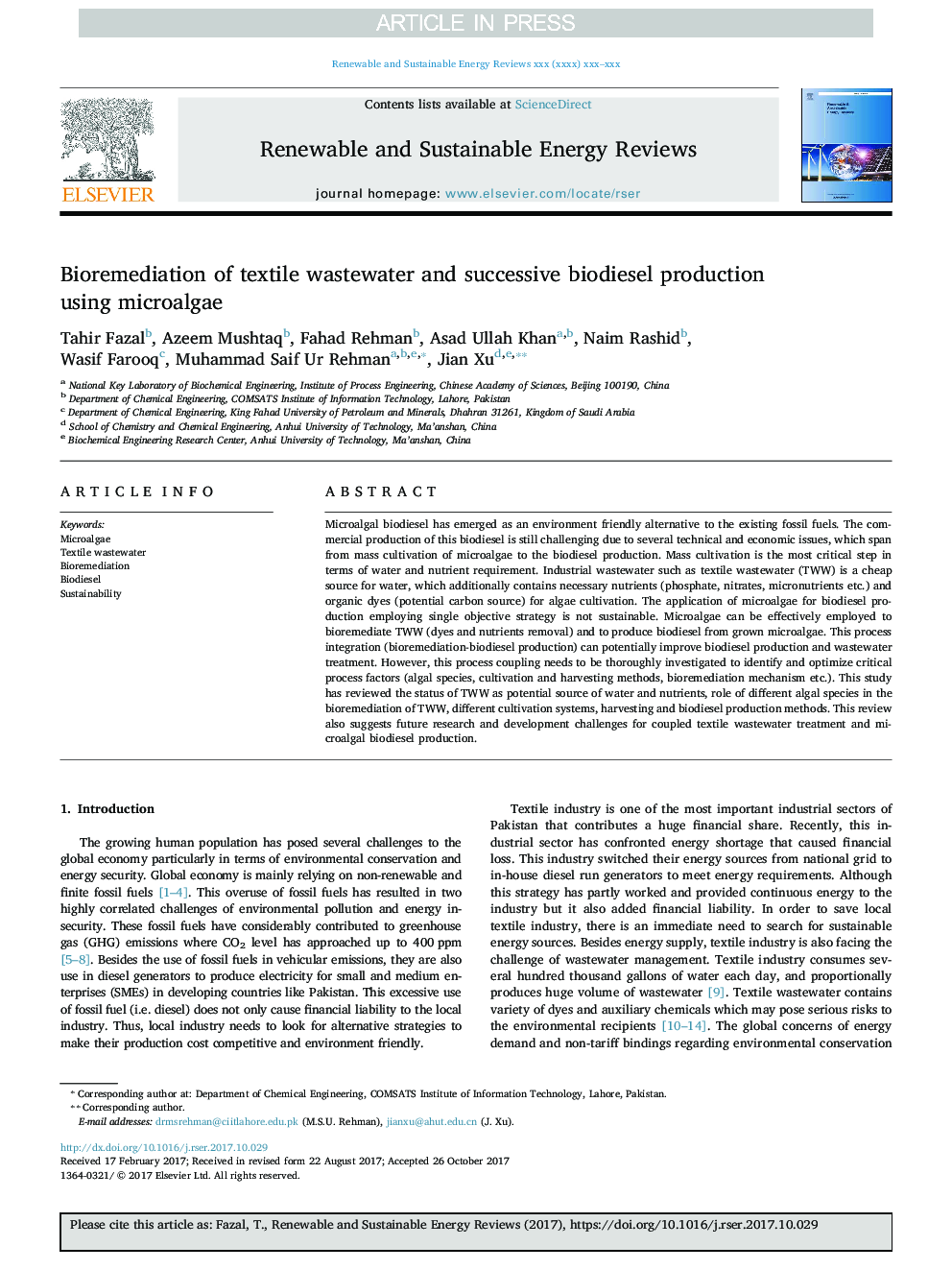| Article ID | Journal | Published Year | Pages | File Type |
|---|---|---|---|---|
| 8112025 | Renewable and Sustainable Energy Reviews | 2018 | 20 Pages |
Abstract
Microalgal biodiesel has emerged as an environment friendly alternative to the existing fossil fuels. The commercial production of this biodiesel is still challenging due to several technical and economic issues, which span from mass cultivation of microalgae to the biodiesel production. Mass cultivation is the most critical step in terms of water and nutrient requirement. Industrial wastewater such as textile wastewater (TWW) is a cheap source for water, which additionally contains necessary nutrients (phosphate, nitrates, micronutrients etc.) and organic dyes (potential carbon source) for algae cultivation. The application of microalgae for biodiesel production employing single objective strategy is not sustainable. Microalgae can be effectively employed to bioremediate TWW (dyes and nutrients removal) and to produce biodiesel from grown microalgae. This process integration (bioremediation-biodiesel production) can potentially improve biodiesel production and wastewater treatment. However, this process coupling needs to be thoroughly investigated to identify and optimize critical process factors (algal species, cultivation and harvesting methods, bioremediation mechanism etc.). This study has reviewed the status of TWW as potential source of water and nutrients, role of different algal species in the bioremediation of TWW, different cultivation systems, harvesting and biodiesel production methods. This review also suggests future research and development challenges for coupled textile wastewater treatment and microalgal biodiesel production.
Related Topics
Physical Sciences and Engineering
Energy
Renewable Energy, Sustainability and the Environment
Authors
Tahir Fazal, Azeem Mushtaq, Fahad Rehman, Asad Ullah Khan, Naim Rashid, Wasif Farooq, Muhammad Saif Ur Rehman, Jian Xu,
